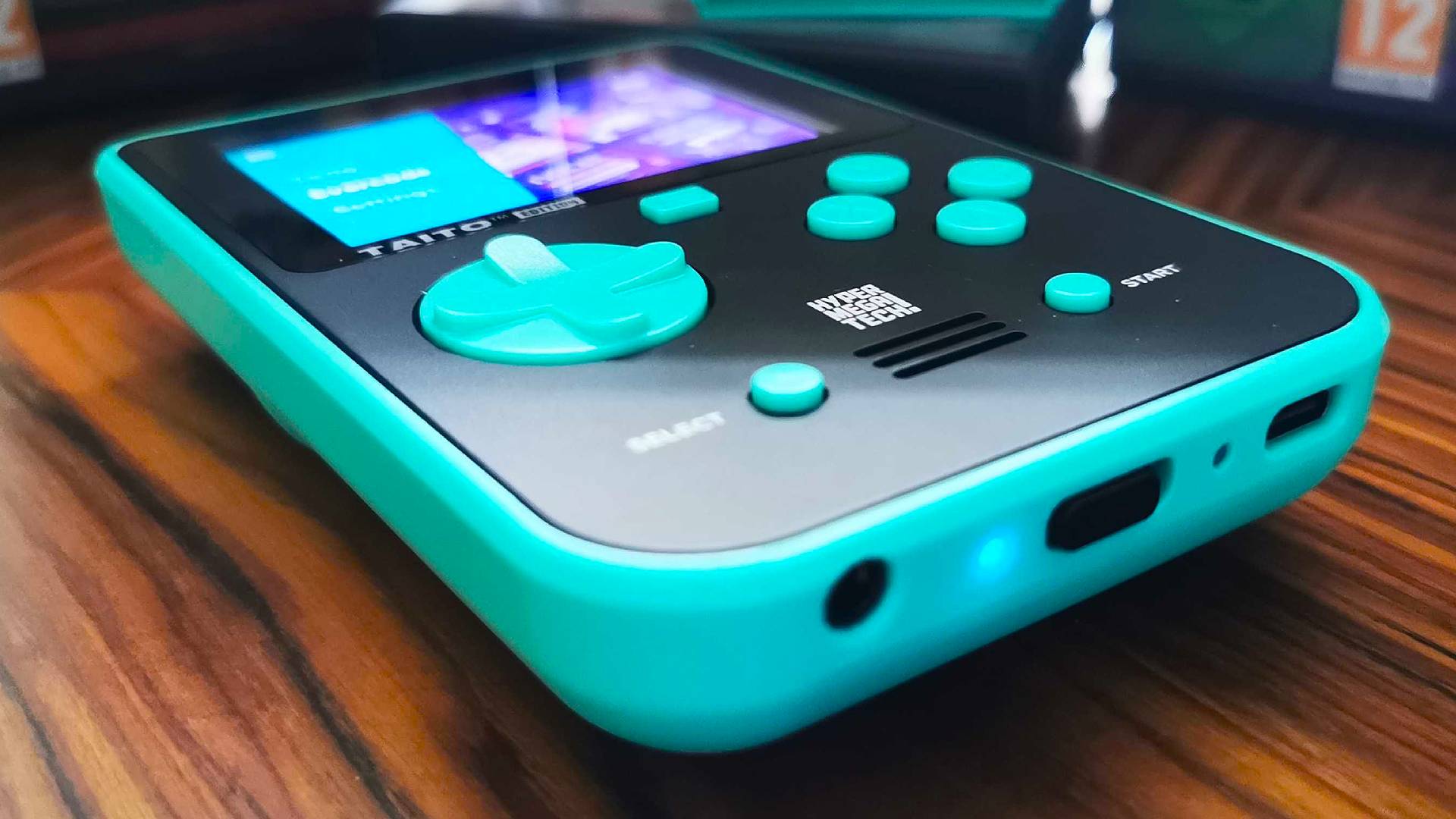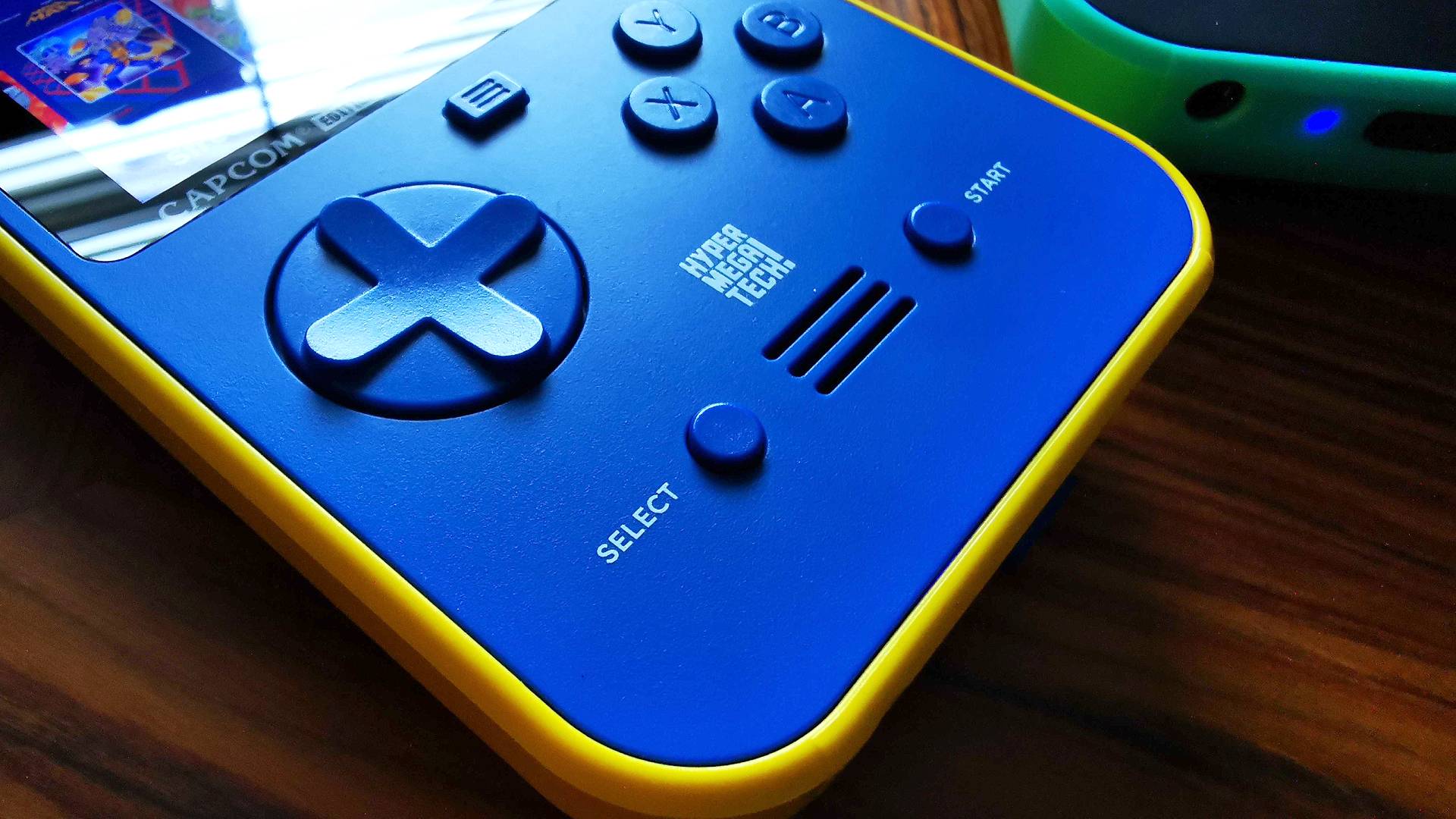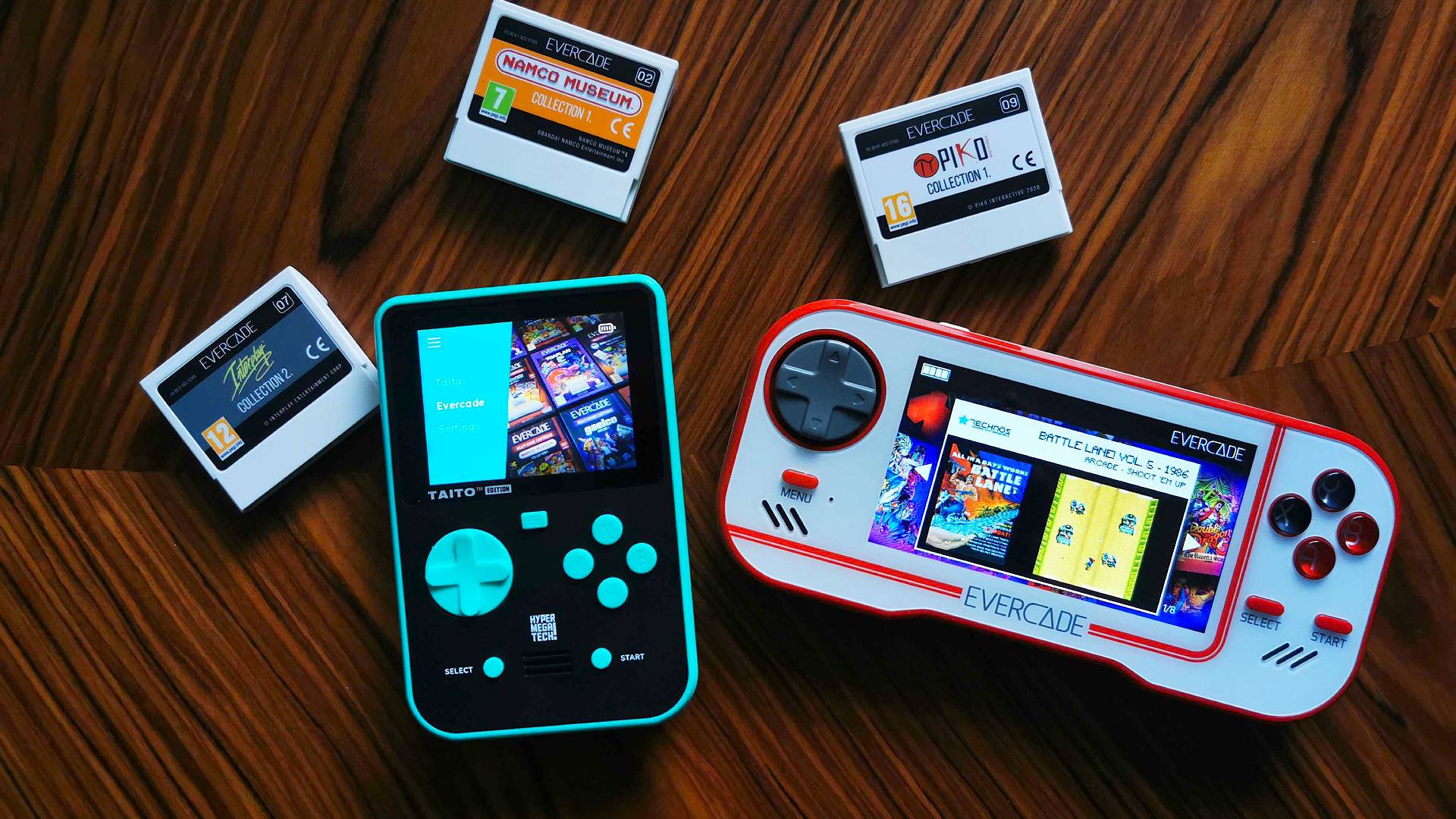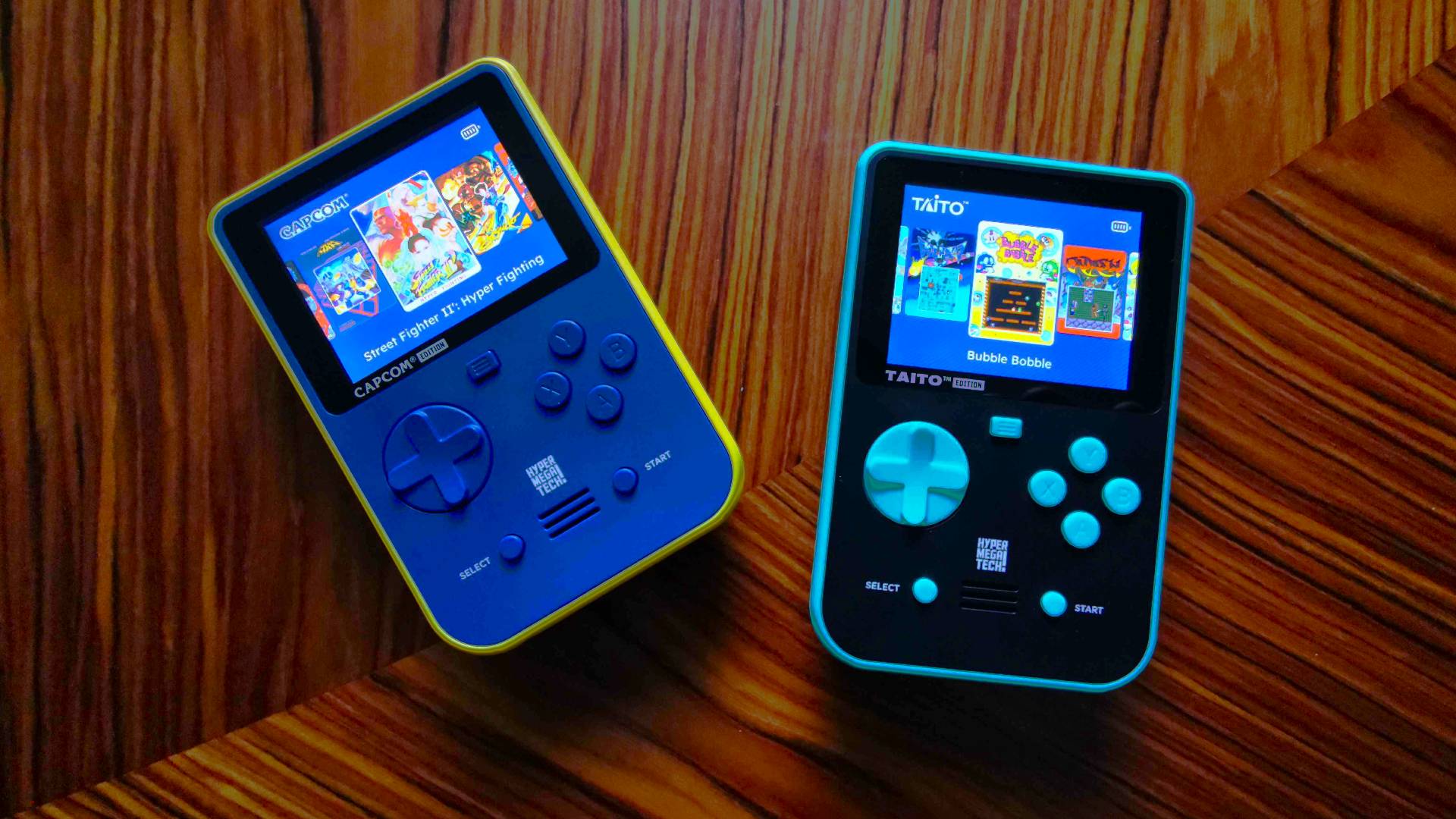GamesRadar+ Verdict
The Super Pocket is a phenomenally cheap portable arcade machine that's an absolute joy to play on. While enthusiasts and those well versed in emulation will likely be drawn to other gaming handhelds, this dinky device is for both casual players and people who want quick, easy access to the classics.
Pros
- +
Fantastic budget price
- +
Great build quality
- +
Expansive library of cartridges
Cons
- -
D-pad might not be to everyone's tastes
Why you can trust GamesRadar+
In many ways, the Super Pocket is the budget gaming handheld I’ve been waiting for. We’re talking about a fully-fledged portable console with its own ecosystem of cartridges that costs less than a new Switch game, and that’s something I can get fully on board with amid a cost of living crisis. I’m just glad that Blaze, the company behind the new Hyper Mega Tech brand and overarching Evercade platform, decided to avoid gunning for the premium market, as its latest device will ultimately help keep bygone classics alive via financial approachability.
Coming in at just $59.99 / £49.99, the Super Pocket takes to the best gaming handheld stage with an incredible price tag. Sure, there are other emulation-based consoles out there that can scratch your retro itch for a similar price, but I’d argue Hyper Mega Tech’s contribution to the Evercade family is in an entirely different league. Not least due to the fact this console requires no faffing around with emulators, as the whole experience is as ‘plug and play’ as it gets.
Is the Super Pocket perfect? Well, no, but I honestly was expecting it to be less so for the price. The handheld pretty much nails everything it sets out to achieve, and any niggles I do have are sort of tied to the nature of the device. Simply put, if you wish you had a console that looks like a Game Boy, but offers instant access to re-released classics and a few indie games for good measure, you’ll want to become pals with this portable.

Design
The Super Pocket takes a ‘less is more’ approach in terms of design, and the end result is a lovable, dinky device that’s a joy to be around. Its chunky plastic shell and punchy colorways somehow manage to hold onto an element of fun while avoiding a Fisher Price feel, which is really all I ever want from a console armed with old games.
The handheld currently comes in Capcom and Taito flavors, and each brand dictates the color you’ll end up with. The Capcom-themed device is a bold two-tone yellow and blue that almost looks like a petrol station near me, while the Taito version wears a black and mint green shell that feels a bit goth in comparison. For the record, I love both for different reasons, but I feel like teenage me would carry around the latter in public while listening to Fall Out Boy on a janky MP3 player.
Screen: 2.8-inch IPS
Resolution: 320 x 240
Battery: 4+ hours
Charging: USB-C
The front of each handheld is furnished with the usual array of retro gaming buttons, including a D-pad, four face buttons, start, and select. Hyper Mega Tech even made sure to include a full set of back buttons that serve as bumpers, meaning you’ll have every input required to play slightly more complicated classics. Those rear buttons do admittedly feel awkwardly cramped in games like Forgotten Worlds (included on the Capcom version), but it’s an expected caveat given its convenient, pocket-size status.
As for ports, Hyper Mech Tech has thoughtfully placed the console’s headphone and USB-C charging ports at the bottom of the console, with the power switch situated in the middle. This admittedly caught me off guard thanks to years spent using a Game Boy, but the switch’s placement makes sense given that the Evercade cartridge slot lives on top.

Features
We’ve already discussed some of the Super Pocket’s standout features, like the fact it uses chunky game cartridges and fits in your pocket. However, there’s also a bit more going on when you switch it on compared to the original Evercade, even if it’s missing some features included with the EXP.
The Super Pocket’s minimalist settings menu provides access to display, sound, and difficulty options, which all come in pretty handy without being too convoluted. That first sub-menu allows you to switch between a default aspect ratio, a pixel-perfect resolution, or a mode that deliberately fills the screen. Again, nothing too complex, but it does enough to satiate casual players and enthusiasts alike.
There are also a few scanline options for those of you who appreciate (or are old enough to remember) the look of old CRT TVs. I’m not sure how appreciated those options will be given the size of the Super Pocket’s screen, but I enjoy having them at my disposal regardless. Just keep in mind that heavier scanlines can reduce brightness, as enabling them by accident may lead you to think the display is duller than it actually is.

Sound settings are pretty self-explanatory, as the menu includes sliders for master volume, menu music, and sound effects. What might pique your curiosity more is the difficulty menu, as it automatically sets things to either ‘easy’ or ‘normal’ in the Super Pocket’s built-in games. This is something I wish more platforms in general embraced, and it makes sense for a casual console that isn’t targeting arcade athletes aiming for record-breaking high scores.
Again, the approach with the Super Pocket is deliberately minimalist, so there are a few omissions with this Evercade device. For starters, you won’t be able to remap the device's buttons, so you best get used to the default configuration of each game. Weirdly, the A and B button layouts are reversed in both the Capcom and Taito versions of the handheld, with jump and action switching places. This isn’t really a biggie, but I’m not really sure why it’s a thing.
Secondly, the Super Pocket doesn’t have a vertical tate arcade mode. I mean, of course it doesn’t, as that’s just not going to pan out well given the screen’s aspect ratio and button layout, but it might be a deal breaker for those of you deliberating between this device and the Evercade EXP.

To clean up house on the “what to expect” front, it’s worth hammering home that the Super Pocket doesn’t run ROM files. There’s no way to load your own digital copies of classic games onto this handheld, and the emulators used by the system aren’t accessible like with other Game Boy-style devices. This is something I firmly view as a good thing, as the whole point of the platform is to provide a simplistic, old-school experience using physical cartridges, and emulation shenanigans would disrupt the vibe.
What the Super Pocket does have, however, is a pretty great selection of built-in games, which varies based on the version you buy. The Capcom handheld in particular comes with beloved classics like Mega Man and Street Fighter 2, alongside 12 other favorites you'll no doubt remember from yesteryear. The Taito edition's collection is admittedly a bit more niche, but you're getting 18 pretty stellar arcade greats that are anything but sub-par. Plus, being able to explore a list of games you're not that familiar with is part of the fun.
Hell, even if you do get bored of the included games, you'll be able to access over 500 more by picking up Evercade cartridges. Boxed releases typically cost between $19 and $25, with each featuring a specific collection usually based on a publisher or retro console. You don't even have to stick with the oldies as there are carts loaded with modern indies like Tanglewood, Xeno Crisis, Coffee Crisis, Little Medusa, and various others.

Performance
I already own an Evercade, so I was fairly confident that the new Super Pocket would hold up when it comes to performance. As someone who also has an original Sega Mega Drive (Genesis) as part of their permanent gaming setup, I can testify to the fact Blaze’s choice of emulators provides a high degree of accuracy. The same goes for the various other bits of hardware replicated by the company’s cart collection, and the newest entry to the ecosystem holds up to the mark.
Yes, I know, the new Super Pocket technically isn’t doing anything new. As far as I’m aware, it still uses baked-in emulators alongside each Evercade cartridge, which in turn, ensures every title is optimized. Still, I think it’s the handheld’s tiny size that makes it feel like more of a powerhouse, as I guess you expect something the size of an old game cartridge to pack less power. And hey, maybe the Evercade EXP technically has more oomph under the hood, but Hyper Mega Tech has done a stellar job masking that fact if it’s the case.
Before some of you purists out there pick up your pitchforks, I’m not saying you’re not going to notice any differences at all compared to the original hardware. You’ll need to fork out a lot more than $50 if you care about flawless accuracy, and that’s pretty much the reason why premium FPGA alternatives like the Analogue Pocket exist. I reckon if you’re the type of person to even know what that latter reverse-engineered Game Boy device is, then you already know what the Super Pocket is all about too, so you’ll know what you’re getting into.

Physically, the Super Pocket is pretty performant in the hands, with each button producing a satisfying, tactile click. I do have my reservations about the D-pad design used this time around, as rather than having a central pivot, the entire pad pushes in like a button. This means depending on how you move your thumbs, you may end up not being able to roll movements quite like you would with other directional pads, but I did admittedly remedy this by adjusting my approach slightly.
Visual performance also holds up pretty well for the most part, even though we’re talking about a 3.5-inch IPS display. I know for a fact that’ll be too small for many of you out there, but as someone with janky eyes, I was able to play at 320 x 280 without squinting too hard. My only real gripe with the display relates to backlight bleeding, as the Capcom version seems to let some light escape at the left-hand side. Thankfully, the fact this isn’t present in the Taito version means it might be a one-off, and in fairness, it is the type of thing I’d expect at this price point.
Hyper Mega Tech claims the Super Pocket will provide at least four hours of juice, and those battery life expectations held up during testing. While that might not sound like a lot for a handheld of this size, it also doesn't take too long to charge back up again, and I doubt anyone will be playing games on this thing continuously for more than four hours straight. Saying that, I spent around three speeding my way through Splatter House 2, with the battery meter staying above halfway.

Should you buy the Super Pocket?
I’ve fallen head over heels for the Super Pocket, as it’s a delightful device that’ll contribute a lot to the Evercade ecosystem as a whole. At $49.99, it's hard to argue with the experience it provides, especially since it’s a fully-fledged platform with physical game releases still coming in hot in 2023. It does that while somehow managing to boast exceptional build quality too, something that’ll make snatching the budget crown from this handheld a challenge.
Of course, simplicity and affordability come with natural caveats, but that’s not something that brings the Super Pocket down. If you’re looking to mess around with emulators or play retro games with 100% accuracy using FPGA tech, then this Evercade console is going to miss the mark. However, if casual, approachable fun is top of your priority list, then the Super Pocket is pretty much a must-buy.
How I tested the Super Pocket
For around a month, I kept the Super Pocket in my backpack and next to my living room couch. While out and about, I explored the handheld's built-in game library, checking each game's music and visuals to ensure acceptable levels of accuracy and performance. This also provided me with a chance to test out the device's internal battery in a practical situation.
At home, I used my existing Evercade collection of cartridges to test wider compatibility with various releases. I largely ended up playing my Namco Collection 2 cartridge for extended periods, as it comes with Splatter House 2 (one of my favorites from back in the day).
For more information on how we test handhelds and other gaming devices, swing by our GamesRadar+ Hardware Policy.
Looking for more portable gaming options? Check out our best gaming laptops list for our favorite powerhouse rigs. If you prefer consoles, we've got you covered with the best cheap Nintendo Switch bundles, as we're always on the hunt for deals.

I’m your friendly neighbourhood Hardware Editor at GamesRadar, and it’s my job to make sure you can kick butt in all your favourite games using the best gaming hardware, whether you’re a sucker for handhelds like the Steam Deck and Nintendo Switch 2 or a hardcore gaming PC enthusiast.




